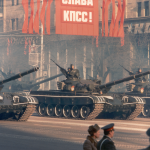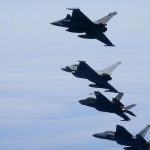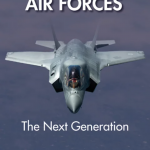Available here from Palgrave Macmillan
This is an ambitious work that aims to analyse the key national security aspects of the Israeli perspective on Iran, as well as Iran’s major national security strategies: its nuclear programme and its use of proxies such as Hezbollah. Much of the book focuses on the different relationships between Israel and the Gulf States and the Middle East. Yet the shadow of Iran’s nuclear programme looms large – almost as if everything else is a sideshow. The author seeks to fill the void left by a lack of (recent) books that focus on security aspects of Israel’s position on Iran. How does it do this, and does it succeed?
First things first; Eilam is attempting to wrap his arms around a series of incredibly complicated relationships. It is in many ways, an impossible task. The author’s initial description of the relationship between Iran, Israel and some Arab States as a triangle is not a bad place to start. As his book develops, Eilam exposes the complexity of a series of relationships across the region that form a multi-sided geodesic shape that is far more complicated than a triangle. Nevertheless, by focusing solely on security aspects, Eilam is at least able to hone in on specifics. For example, when discussing the role of the UAE in this cluttered picture he can range from the security implications of the 2020 Normalization Agreement to the implications of that nation fielding the F35 fighter in a single chapter.
The introduction itself is a very useful synopsis of the book’s main chapters that allows the reader to drop into a specific chapter that may be of interest. Chapters titled Jordan, Israel and Iran, Israel, Egypt and Iran, and Israel, Iraq and Iran give the book the feel of a Middle East road trip. Many of the chapters are constructed from a series of short papers that the author has brought together under a common title. The fact that each chapter has its own short conclusion allows the reader to dip in and out of a region/subject without having to cross refer to the rest of the book. The book’s structure certainly reflects the complexity of not just the Middle East but the relationship between Israel (and the US), Iran (and its proxies), and those Arab nations who have a vested interest in either curtailing Iran’s rise to power or acting as its allies in a struggle against Israel.
Israeli Strategies is written in an informal style with a plethora of references and footnotes used to support the author’s personal views. Most of these are drawn from either news organisations such as Al Jazeera and The Times of Israel, or recent journal articles which give the book a very fresh and modern feel. The one complaint I do have is the informal approach does result in some loose terminology. The word ‘might’ is used almost 600 times, ’may’ over 100, and etc. on 40 occasions. The number of possible combinations and ‘what ifs?’ and ‘coulds’ can be overwhelming at times. Replacing ‘may’ and ‘might’ with ‘realistic probability’ or ‘likely ‘would at least give a recognizable weighting to the suppositions on offer.
A number of real gems can be found throughout the 200 plus pages: the potential for Gulf State Arab nations to form an ad hoc coalition with Israel to support any war with Iran, the possibilities of a Kurdish state aligning against Iran should Iraq ever collapse, and the notion that Israel would benefit from a prolonged Iranian presence in Syria that not only costs the Iranian economy but causes division between the two governments. Eilam is also of the opinion that the Syrian civil war has benefitted Israel, weakening Assad and causing a divide between Hamas and Hezbollah. With the latter suffering significant losses as the fighting has progressed.
My personal favourites were chapter 4, 5 and 6. Chapter Four heralds the arrival of Hezbollah and Hamas with Eilam’s view that the Syrian Civil War is distracting Hezbollah in its fight against Israel. The region’s focus then shifts to include two particularly interesting sections covering Lebanon, the Palestinian Authority, and the emergence of the Palestinian Islamic Jihad.
Chapter 5 concerns Israel’s approach to confronting Hezbollah and the sense of frustration that overwhelming Israeli firepower has at best resulted in the previous four engagements ending up as draws. There is some discussion here about Israel’s Momentum Plan that looks to increase lethality across domains, as well as the construction of Brigade and Battlegroup Training Centre that mimic the topography of Lebanon, complete with ‘Hezbollah bunkers’. As Eilam says, only IDF personnel in their 40s and 50s will remember what it is like to fight in Lebanon.
Chapter 6 gives an interesting insight into Iran-Syria relationships and the issues with the chain of command on the ground and the potential for Syria to downscale the Iranian presence now that Assad has won the civil war. Eilam also considers Assad’s ability to prevent Iran from attacking Israel from Syrian territory. Such a stance would suit Israel who could allow Assad to remain in power for as long as this held. The author also raises the matter of Israel wanting Iran to remain in Syria, given that it is costing their economy an estimated $6Bn a year to prop up the Assad regime.
There is a sense of frustration that permeates the book that Iran continues to function as a state despite American sanctions, its own economic woes, and the recent waves of civil unrest. It seems that only the presence of the Arabian Peninsula and the Fertile Crescent that lie between the two countries has prevented direct conflict from taking place since 1979.
Israeli Strategies is highly recommended for those who want to learn more about the complexities of the relationship between Israel and Iran and how these two powerful nations contest the Middle East and the Gulf.

Phil Clare
Phil Clare is a former RAF Logistics Officer. He has over 30 years experience of single and joint service environments, as well as operational experience that spans Op GRANBY to HERRICK.





